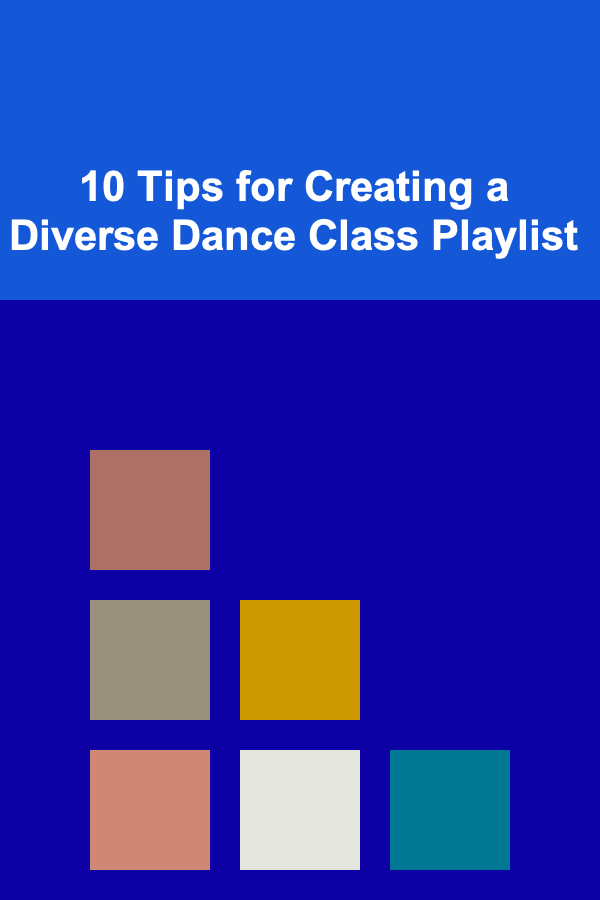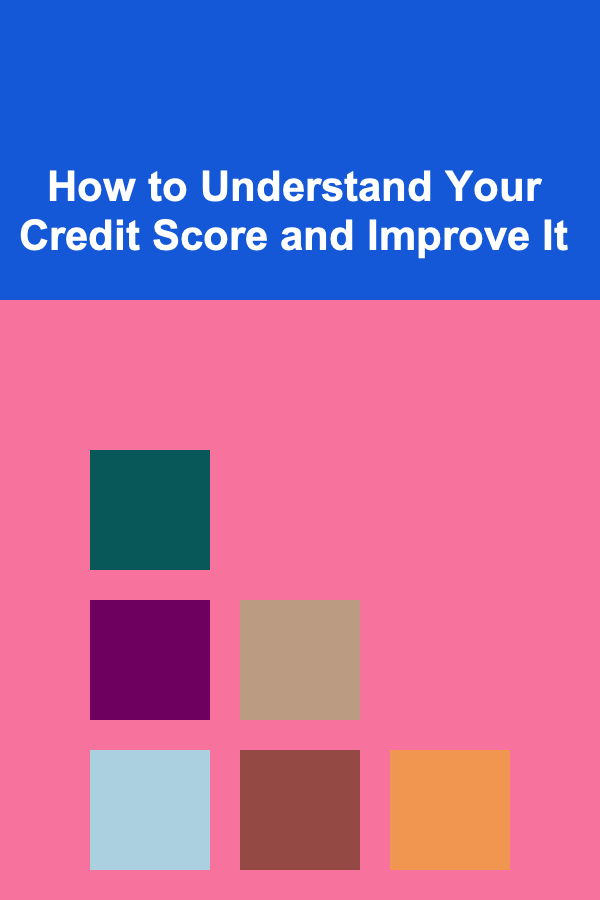
10 Tips for Creating a Diverse Dance Class Playlist
ebook include PDF & Audio bundle (Micro Guide)
$12.99$6.99
Limited Time Offer! Order within the next:

Creating a diverse dance class playlist can transform an ordinary class into a dynamic, engaging, and inspiring experience. Whether you're teaching ballet, hip hop, jazz, contemporary, or even a fusion of various styles, the music you choose sets the tone for your students' entire session. The right combination of tracks can encourage emotional expression, enhance physical movement, and foster a sense of inclusivity among all participants.
While it's tempting to stick to your favorite genres or a particular sound, a well-curated playlist that draws from a variety of musical styles will appeal to a broader range of students, keep the energy fresh, and provide the diversity needed for dancers to explore different rhythms, tempos, and cultures.
In this article, we'll share 10 tips that will help you create a diverse dance class playlist that enhances the learning environment, fosters creativity, and meets the needs of your students.
Know Your Class's Style and Energy Level
Why it Matters:
Every dance style has its own inherent rhythm and energy, and the music you choose should match the physicality and mood of the style you're teaching. Additionally, the energy level of the class---whether it's an introductory class or an advanced group---should influence your playlist selection.
For example:
- Ballet requires classical music with clear phrasing and emotional depth.
- Hip hop benefits from upbeat, rhythmic tracks with strong beats.
- Contemporary might need more eclectic, emotional music, while jazz calls for high-energy, swinging tunes.
- Zumba or cardio dance classes thrive on fast-paced, high-energy pop, reggaeton, or dancehall music.
Tip:
Assess the style of the dance class and the intensity level before picking music. For a high-energy class, you'll want fast, driving beats, while slower-paced classes may benefit from relaxing or melodic music.
Actionable Steps:
- Review the syllabus and choreography before selecting music.
- Consider the age, skill level, and preferences of the students when creating the playlist.
- Choose music that enhances the emotional expression and energy required for the dance style.
Include Various Genres and Styles
Why it Matters:
A diverse playlist goes beyond genre---it embraces global cultures, various musical traditions, and a wide spectrum of sounds. Exposing students to different genres fosters an appreciation for diversity and provides an opportunity to dance to rhythms that they may not be familiar with.
By incorporating different genres such as classical, pop, electronic, world music, jazz, blues, or even soundtracks, you are opening up opportunities for dancers to experiment with different techniques, moods, and stylistic nuances.
Tip:
Don't hesitate to mix genres. A contemporary dance class, for instance, could benefit from transitioning between classical piano pieces, soulful pop tracks, and electronic beats to create varied textures for movement exploration.
Actionable Steps:
- Choose music from various genres, including mainstream pop, classic rock, international hits, and traditional folk music.
- Include music that represents different cultures, such as Latin, Afrobeat, or reggae.
- Explore instrumental music alongside vocal tracks for more variety in mood and movement possibilities.
Use Music to Set the Emotional Tone
Why it Matters:
Music isn't just about rhythm and tempo; it's a powerful emotional tool that can influence how dancers feel during a class. Whether you want to evoke joy, intensity, sadness, or tranquility, the right song can transport your students into a different emotional space.
For example:
- Uplifting and fast-paced music is perfect for energizing a warm-up or high-intensity cardio routines.
- Slow, melodic tunes create a reflective mood, ideal for stretching, contemporary, or lyrical dance.
Tip:
Curate a playlist with songs that transition smoothly from one emotional tone to the next, depending on the class structure. Use contrasting emotional states to create a dynamic and transformative experience.
Actionable Steps:
- Open the class with light, feel-good music that encourages relaxation and focus.
- Select a few emotionally intense pieces for moments that require more deep, introspective movement.
- End the class with calming, meditative music that allows students to wind down.
Maintain a Good Flow with Transitions
Why it Matters:
A playlist with smooth transitions between songs will help maintain the momentum and energy of the class. Abrupt changes in tempo or genre can disrupt the flow of a class, causing dancers to lose focus or momentum.
Creating smooth transitions is especially important if you're choreographing sequences that flow from one movement to the next. Music should seamlessly support the transitions in your choreography and energy levels, ensuring that the dance remains fluid and natural.
Tip:
Arrange your playlist in a way that each song flows into the next, building or reducing energy gradually.
Actionable Steps:
- Arrange tracks by tempo, energy level, or mood. Start with slower-paced songs and gradually move into faster, more energetic tracks.
- Use instrumental or ambient interludes to provide a breather between high-energy songs.
- Consider using apps or software to transition songs seamlessly, without gaps between them.
Integrate Music with Clear, Recognizable Beats
Why it Matters:
For most dance styles, having clear, steady beats is essential to help dancers stay in sync with the music. Clear rhythm and predictable time signatures allow dancers to focus on technique, choreography, and coordination without worrying about staying on beat.
For example, hip hop or jazz requires strong beats for complex footwork, while contemporary or modern dance might benefit from a slightly more free-flowing, less predictable rhythm.
Tip:
Choose songs that feature clear beats, especially if you are working on complex choreography or teaching beginner dancers. While experimental or ambient music can be great for free-flowing styles, a strong beat can help with coordination and timing.
Actionable Steps:
- For rhythm-heavy classes, choose songs with clear and consistent beats (e.g., house, reggaeton, rock).
- For more abstract or expressive styles, you can opt for music with less regular rhythm (e.g., some classical, jazz, or electronic music).
- Experiment with songs that have syncopated beats to introduce more challenge to advanced students.
Choose Music that Appeals to the Group's Demographics
Why it Matters:
Understanding your students' demographics---such as age, cultural background, and musical preferences---can help you create a playlist that resonates with them. A playlist that reflects your students' tastes and backgrounds can increase their engagement, making the dance experience feel more relevant and exciting.
Younger students might connect better with current pop hits, while older adults might prefer classic hits from the '80s and '90s. Students from diverse backgrounds might appreciate music that represents their culture or region.
Tip:
Incorporate songs that reflect the diversity of your students. Ask for song requests occasionally to ensure your playlist resonates with them and keep the music fresh and exciting.
Actionable Steps:
- Ask your students about their favorite music genres and artists, and incorporate them into the playlist.
- Balance popular tracks with classic songs from different decades to appeal to a range of tastes.
- Include music from various languages and regions to appeal to students from different cultural backgrounds.
Utilize Remixes and Covers for Variety
Why it Matters:
Using remixes or covers of popular songs adds an extra layer of variety to your playlist. These versions often offer a fresh perspective on a familiar track, with new instrumentation, tempo changes, or unique stylistic choices. Remixes can be ideal for giving students a new take on songs they already love, while covers may add a surprising twist to well-known tracks.
Tip:
Try including remixes of popular tracks that are more upbeat or have a different genre twist, which can elevate the energy and excitement of the class.
Actionable Steps:
- Search for remixes of popular songs, especially those with different tempos or beats.
- Explore covers of classic songs by different artists or genres.
- Include a remix or cover towards the middle or end of the playlist to reinvigorate the class.
Keep the Playlist Length Appropriate for the Class
Why it Matters:
A dance class typically lasts between 45 minutes to an hour, so your playlist should be designed to fit within this timeframe. Overly long playlists can cause you to run out of time before the class finishes, or worse, leave you scrambling to fill the final minutes with random tracks.
Tip:
Time your playlist carefully, ensuring you have enough songs to cover your entire class. You can also leave room for improvisation or stretching at the end.
Actionable Steps:
- Estimate how many songs you'll need based on the class length and tempo of each song.
- Avoid a playlist that's too long by editing down to the essential tracks.
- Create different playlists for different class lengths or formats (e.g., warm-up, technique focus, choreography, cool-down).
Consider Seasonal or Event-Specific Themes
Why it Matters:
Themed playlists can be a fun and creative way to align your class music with the season, holiday, or event. For instance, a Halloween dance class might feature spooky soundtracks or eerie music, while a summer session could have light and breezy tunes. Additionally, event-specific themes like a "disco night" or "80s dance party" can provide a fun and engaging atmosphere.
Tip:
Make playlists that match the theme of the class, season, or special events to add an element of excitement and anticipation for students.
Actionable Steps:
- Plan playlists around holidays, such as using Christmas or New Year's music for seasonal themes.
- Create themed playlists for particular dance events, such as a "Flashdance" or "Glee-inspired" class.
- Keep your students engaged with themed playlists for different times of the year.
Experiment and Get Creative
Why it Matters:
Ultimately, the best playlists are those that reflect your unique teaching style and creativity. Don't be afraid to experiment with new genres, artists, or unconventional combinations of music to keep your students engaged and excited.
By regularly trying out different musical combinations, you can discover what works best for your classes while also keeping things fresh.
Tip:
Give yourself permission to be bold in your playlist choices. Your creativity will inspire your students and enhance their connection to the dance.
Actionable Steps:
- Try unusual song combinations---mix genres or create medleys.
- Include songs you've never used before to explore new sounds and ideas.
- Take risks with different tempos, beats, or musical genres that challenge dancers to adapt their movement.
Conclusion
Crafting a diverse dance class playlist is more than just about choosing songs; it's about creating a sensory experience that supports the rhythm, emotions, and energy of the dance class. By following these 10 tips, you can curate a playlist that not only challenges and excites your students but also encourages them to explore different genres, tempos, and cultures.
With the right playlist, you can inspire creativity, enhance learning, and make each class a unique, dynamic, and enjoyable experience.
Reading More From Our Other Websites
- [Organization Tip 101] How to Organize Your Music Room for Maximum Creativity
- [Organization Tip 101] How to Organize Kids' Schoolwork and Art Projects
- [Organization Tip 101] How to Organize Your Shoes for Quick Access
- [Home Budget 101] How to Budget for Holiday Expenses Without Going Into Debt
- [Home Holiday Decoration 101] How to Organize the Ultimate Holiday Movie Marathon with Cozy Decorations
- [Personal Investment 101] How to Invest in Cryptocurrencies Safely and Wisely
- [Organization Tip 101] What Should You Consider When Creating an Organized Kids' Study Space?
- [Personal Investment 101] How to Assess the Condition of a Property Before Purchase
- [Organization Tip 101] How to Manage Access Control for Your Home
- [Home Maintenance 101] How to Ensure Your New Light Fixture Installation Is Energy-Efficient and Aesthetically Pleasing

How to Clean and Maintain Your Home's Ceiling Fans for Better Airflow
Read More
How to Create a Dream Pantry During Your Home Renovation
Read More
How to Diversify Your Income Streams by Adding Multiple Side Hustles
Read More
How to Understand Your Credit Score and Improve It
Read More
How to Update Your Home's Curb Appeal with a Small Budget
Read More
How to Use Bookends for Stylish Desk Organization
Read MoreOther Products

How to Clean and Maintain Your Home's Ceiling Fans for Better Airflow
Read More
How to Create a Dream Pantry During Your Home Renovation
Read More
How to Diversify Your Income Streams by Adding Multiple Side Hustles
Read More
How to Understand Your Credit Score and Improve It
Read More
How to Update Your Home's Curb Appeal with a Small Budget
Read More